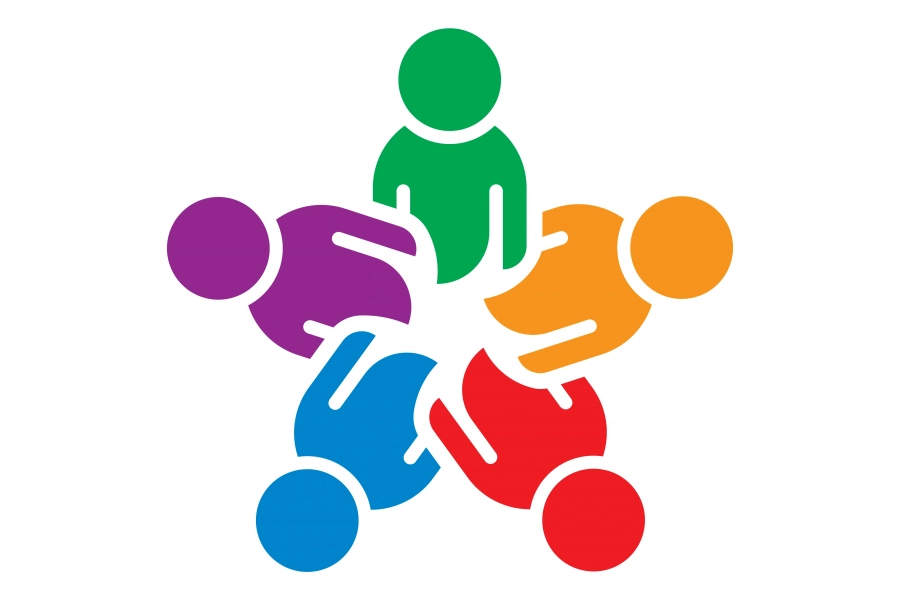


Multiculturalism and diversity in bilingual schools
Learning foreign languages, and bilingualism in particular, from an early age leads to greater cognitive flexibility, and significantly increases the child's lexical range as well as his or her analytical and logical skills.
Bilingual pupils develop the art of living together, are better prepared for the multicultural world and increase their chances of professional success by 35% !
Immersion enables them to acquire real practice in the language, to understand without difficulty and to express themselves with ease quickly.
The transmission of a language and its culture often involves education. This is why the language school system has a major influence on bilingualism. There are a number of terms used to describe the different forms of bilingualism in schools. These include bilingual teaching, bilingual education, immersion and plurilingual teaching.
By bilingual teaching, we mean using two languages (official, national or extraterritorial) to convey non-linguistic subjects through school subjects such as the environment, geography, history or interdisciplinary projects. Bilingual teaching is often supplemented by activities to develop grammatical and semantic skills in the languages used. The term ‘bilingual education’ is also used, despite the fact that the English term is broader in scope than its French counterpart, which refers more to education provided within the family than to school education.
In today's educational landscape, bilingual schools stand out as bastions of multiculturalism and diversity, offering a fertile breeding ground where languages and cultures intersect and mutually enrich each other. These institutions play a crucial role in promoting intercultural understanding and valuing linguistic diversity, helping to shape open-minded and tolerant citizens of the world. In this article, we explore in depth the importance of multiculturalism and diversity in bilingual schools, and the initiatives put in place to foster an inclusive and enriching educational environment.
1. Celebrating linguistic and cultural diversity
At the heart of bilingual schools lies a rich linguistic and cultural diversity. These schools provide a space where pupils are exposed to several languages and cultures from an early age. Whether through language classes, cultural events or artistic activities, bilingual schools celebrate diversity in all its forms, offering pupils the opportunity to explore and understand the many facets of the world around them.
2. Promoting Integration and Inclusion
Bilingual schools are places where diversity is not only tolerated but celebrated. They focus on the integration and inclusion of all pupils, whatever their linguistic or cultural background. Initiatives such as welcome programmes for newcomers, intercultural support groups and community events foster a sense of belonging and mutual respect within the school community.
3. Promoting cultural exchange
Bilingual schools actively encourage cultural exchange between pupils, teachers and families. Cultural events, shows, exhibitions and school trips are organised to enable pupils to discover and appreciate the different cultures represented in their school. These experiences promote mutual understanding and strengthen links within the educational community.
4. Education for tolerance and respect
Multiculturalism and diversity are at the heart of education for tolerance and respect in bilingual schools. Pupils learn to value cultural and linguistic diversity, to recognise and overcome prejudice, and to promote peace and harmony within their school environment. Civic education programmes and intercultural projects encourage pupils to become agents of positive change in their communities.
5. Preparing world citizens
By exposing students to a variety of languages and cultures, bilingual schools prepare them to become competent and open-minded citizens of the world. They acquire the linguistic, intercultural and social skills needed to navigate successfully in an increasingly interconnected world. Thanks to their experience in multicultural environments, these students are better prepared to meet the challenges and seize the opportunities presented to them on a global scale.
Multiculturalism and diversity are indeed fundamental pillars of bilingual schools, offering students an enriching and inclusive education. By celebrating the richness of the world's languages and cultures, these schools help to shape open-minded, empathetic and respectful individuals, ready to embrace diversity in all its forms while retaining the foundations of traditional Christian culture. At a time when intercultural understanding and tolerance are more important than ever, bilingual schools play an essential role in building a more harmonious and interconnected future for all.


